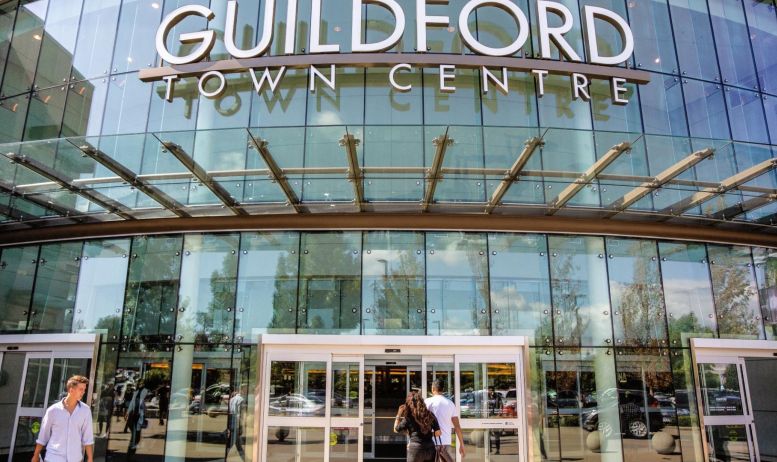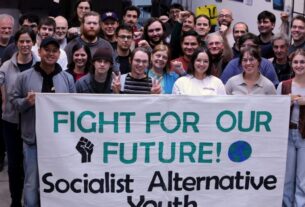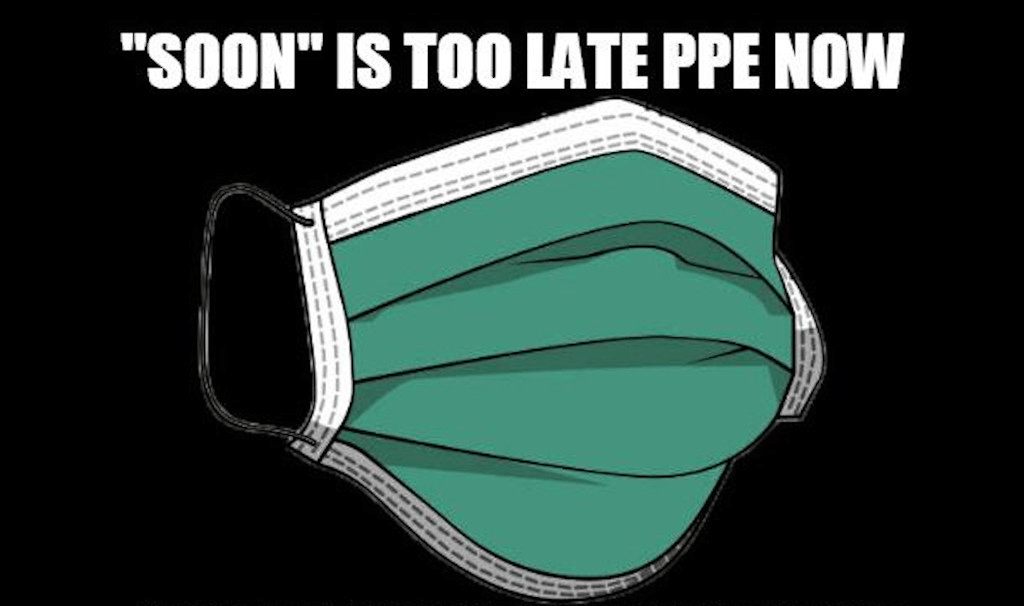Nine days after the polls closed on Saturday, October 19, the outcome of BC’s election is becoming clearer. The BC Conservatives, which only four years ago got less than two percent of the vote and elected no one, with many candidates who had outlandish and bizarre views, nearly won. They were running against the NDP — a sensible, moderate party, which won nearly 50 percent of the votes four years ago.
With two recounts planned, the NDP has the smallest number of seats for a majority, 47 districts. The Conservatives have elected 44 and the Greens have elected 2. The two recounts are in Surrey Guildford where the NDP won by 27 votes and Kelowna Centre where the Conservatives won by 38 votes. The NDP won 44.9 percent of the popular vote while the Conservatives won 43.3 and the Greens 8.2 percent.
Just six months ago the NDP was complacently coasting to victory as two conservative parties — called the Conservative Party of BC and BC United — fought for second place. Over the summer big business in BC ruthlessly told BC United to drop out of the race, which it dutifully did. Suddenly, at the end of August, it was a very tight contest. Too close to call.
Conservatives — A New Party?
Much has been made of how the Conservatives came from nowhere. Its leader, John Rustad, was a longtime member of the governing conservative party of the day, then called, confusingly, the BC Liberals. He was a parliamentary secretary and then a Cabinet member between 2005 and 2017. He continued as a BC Liberal after they were kicked out of office until he was expelled for climate change denial. Hardly a novice.
He picked up the empty shell of the BC Conservatives — no connection to the federal conservatives — and became a rather wooden imitator of Pierre Poilievre. He talked of “common sense” policies, “axing the tax,” etc.
BC’s big business is ruthless when it comes to politics, as with everything else. They have a long history of dumping a party if it is no longer doing what they need. Business in BC is dominated by resource extraction, construction and property development and they want a government that works for them, ignoring whether it works for the people of BC.
In the 1940s the Conservatives and Liberals were separate parties and the CCF (forerunner to the NDP) was threatening to win with the two pro-business parties splitting their votes. First business imposed a coalition and after 1952 dumped both parties for Social Credit. For nearly forty years, with a three-year break of a bold NDP government, Social Credit ran the province and big business smiled. But by the start of the 1990s the Socreds were not fit for purpose and the BC Liberals became the bosses’ party. In 2017 the Liberals were running out of steam and the NDP and Greens became the government. The Liberals lost decisively in 2020, and the new leader, Kevin Falcon, tried a re-brand changing the name to BC United, but it failed. The BC Conservatives may be a new name, but they continue a long line of pro-business parties in BC.
The name, Conservatives, the aping of Poilievre’s slogans and an influx of federal conservative operatives allowed Rustad’s party to tap a rich vein of anger.
NDP’s Failing
The NDP’s election campaign was a mix of a promise to do better and defence of its record of government. Many asked why are you promising to do better now, rather than act over the last four years.
The NDP in office did make some positive moves. BC responded earlier to the COVID pandemic that the other five large western provinces. The government partially redressed the balance between workers and bosses over union recognition (allowing card check for certification) and has dramatically increased the number of nurses. The former BC Liberal government had taken over $1 billion out of the province’s insurance company, ICBC. The NDP sorted out the ICBC mess and cut auto insurance premiums.
But on the big issues, the NDP always tried to find a halfway house between what workers needed and bosses wanted. Workers and unions campaigned for 10-days paid sick leave. No surprise, the bosses wanted none. After Doug Ford established 5 days in Ontario, BC’s NDP did the same — splitting the difference between workers and bosses.
The NDP has consistently refused to introduce solid rent control so that landlords can’t jack up the rent between tenancies (vacancy control). If enacted this would end the incentive for landlords to evict tenants on spurious or weak grounds. But the landlords and property developers are opposed to such tenants’ rights, so the NDP did not budge.
The NDP has put money into building homes, but far too little and in the main they rely on the private developers and landlords. In 2021 they announced a $2 billion Housing Hub program to build “affordable rental housing,” by subsidizing for-profit developers. In 2024 the tune changed: Housing Hub was to “to increase the supply of rental housing for middle-income households.” Middle income is for households with an income of up to $191,000! When high earners like that need subsidized housing, it shows how sick housing is.
The housing crisis needs direct action by all levels of government to build large numbers of rental housing for low- and medium-income households and individuals. Canada used to build rental public housing, around 20,000 a year between 1964 and 1974. The government also subsided co-ops and other forms of non-market housing. All this stopped in the 1990s under the Federal Liberals. If these programs had continued, Canada would have somewhere around 750,000 additional units, proportionally over 85,000 in BC, of genuinely affordable public housing.
Of course, the BC NDP could not do all this on its own, but if it had publicly stated it was going to do all it could to build public housing and challenged the federal Liberals to match funds, BC would be a lot further along in tackling the housing crisis.
Can’t Appease Big Business
The NDP’s attempts to appease big business were doomed to fail. The resource extraction sector does not want to recognize Indigenous rights, and wants fewer safety and environment rules and lower royalties to extract minerals and trees. The construction and property developers want fewer rules to constrain them building luxury apartments and the landlords want no rent controls. None of them want strong unions.
The BC NDP cannot deliver that program, but its attempts at appeasement means it does not deliver for working people. It hasn’t reversed all the tax cuts of the last government so is short of funds for services. It has massively subsidized the LNG sector but the the fossil fuel companies want more, planning several new pipelines.
In spite of all the gifts to big business from the NDP and the outlandish views of some Conservative candidates, big business did not hesitate to fully support the Conservatives.
Conservative’s Campaign
The Conservative’s campaign focused on people’s discontent at the high cost of living, unaffordable housing, the loss of forestry jobs and a feeling that things are falling apart, claiming it was about soaring crime and an out-of-control drug crisis.
Many of these issues have been growing worse for decades, such as the decline in BC’s forestry sector or the lack of public and affordable housing. The flooding of toxic drugs in BC started before 2015, when a health emergency was declared — this was when John Rustad was in the Cabinet. The conservatives’ “solutions” will not solve any of these issues.
One of Rustad’s high profile promises was to exempt the first $3,000 that people pay in rent or mortgage interest from provincial taxes. This would mean a rebate to households of $1,600. The only cap is it would be limited to households with incomes of less than $250,000. However, the likely impact would be that landlords would jack up rents and house prices would rise. The cost to the BC budget is estimated at $3.5 billion.
They claim they would boost economic growth by cutting “red tape” — read health, safety and environment rules — on mining and other resource extraction sectors.
Their budget plans don’t add up as they promise large tax cuts and additional spending, but with no tax hikes. The magic trick is a claim that they would grow the BC economy by 5.4 percent a year. In the 16 years of the BC Liberal government, which Rustad was part of, overall economic growth averaged half that rate. Most economists expect that the world is heading for a recession, not a boom.
Other parts of the Conservative’s platform included allowing for-profit health provision and abolishing SOGI (sexual health and understanding education) in schools. In the past, Rustad was a climate change denier, and his party has no plans to tackle climate change. Instead they would scrap the weak policies the NDP has and expand fossil fuel production.
Rustad has stated he will repeal the Declaration on the Rights of Indigenous Peoples Act (although he voted for it in 2019). He has focused on what he calls “economic reconciliation,” getting Indigenous communities to buy into polluting their own lands and waters.
The NDP tried to direct attention to some of the more outlandish and derogatory claims by Rustad and other candidates, but this didn’t work. It failed against Trump, Milei in Argentina, and will fail against Poilievre. People are angry and are looking for an alternative. The BC NDP had become the status quo, one that had not tackled unaffordable housing, a lack of doctors and the cost of living. All of these require drastic action, not modest tinkering.
Blame Greens
Some NDPers have tried to blame the Greens for the close result. This is untrue and is an attempt to deflect from the NDP’s weakness. It is the case that the Greens’ leader, Sonia Furstenau, probably did the best in the only leaders’ debate. The party had the most positive platform including increasing big business taxes to improve public services and bringing in real rent control.
The Green vote in 2024 was sharply down compared to 2020. Many people who voted Green in 2020 switched to the NDP in this election helping to stop the conservatives.
The Greens had two seats before the election and two after, losing one — Cowichan Valley — to the NDP and gaining one — Sea to Sky — from BC United/Conservatives.
The reason for the wafer-thin NDP win does not lie with the Greens.
BC’s Political landscape
This election has continued the long trend of the NDP’s vote becoming more concentrated in Metro Vancouver and Greater Victoria, while the conservatives strengthened their grip on the rest of the province. In 1996 the NDP won 13 seats outside of the southwest corner of BC, now they are down to 4. The NDP lost two long-held seats in in the more rural, resource-based North Island and Stikine, as well as the swing riding of Boundary-Similkameen.
The only good news for the NDP was in inner Metro Vancouver (North Shore, Vancouver, Burnaby, New Westminster and Tri-Cities). Before the election it held 20 of the 24 seats. Now it has 23 of 26 and the Greens picked up one. The conservatives now only have two seats in this area — among the most affluent ridings in BC.
The newer suburbs of Metro Vancouver are where the NDP lost. In the 2020 election, the NDP made deep inroads into traditional conservative territory of the Fraser Valley, winning seven of the nine districts. In 2024, not surprisingly, they lost all those and now only have one of ten.
The real setback for the NDP was in Surrey and Richmond. In 2020 they held 10 of the 13 seats. Now they have just 5 out of 14 seats.
Workers Need Their Own Party
BC’s big business has always ensured it has a political party that does its bidding. It is not interested in a party that seeks some fantastical middle ground between its profits and the needs of workers.
The weakness of the NDP in this election makes clear that the working class of BC needs a party that stands up for workers’ interests. A party that will put affordable housing, good health care, good union jobs, a healthy environment and human rights before the profits of a few.
Postscript: New Brunswick and Saskatchewan
On the east coast of Canada, there is more cheerful news. The reactionary government of Blaine Higgs was roundly defeated in the election on October 21. The Conservatives lost 9 of their previous 25 seats, including Higgs’s own seat. The Liberals doubled their share of seats from 15 to 31.
The Higgs government was unpopular because of the major crisis in the health system, soaring rents and his attack on LGBTQ+ children’s rights.
The Liberal leader, Susan Holt, publicly distanced the party from the Federal Liberals.
In Saskatchewan, the Sask Party ‘s majority was slashed as the NDP doubled their seats from 13 to 26.




